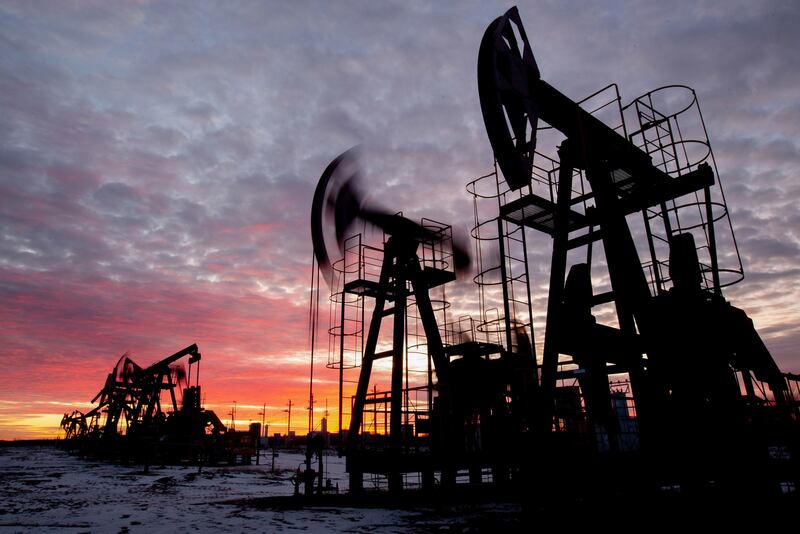Oil prices fell in morning trade on Wednesday after rising 2 per cent the previous day as an unexpected rise in US crude stocks stoked demand fears.
Brent, the benchmark for two thirds of the world’s oil, was trading 0.85 per cent lower at $74.68 a barrel at 11.27am UAE time.
West Texas Intermediate, the gauge that tracks US crude, was down 0.92 per cent at $69.03 a barrel.
Brent crude settled 2.07 per cent higher at $75.32 a barrel on Tuesday, while WTI was up 2.73 per cent at $69.67.
US crude inventories — an indicator of fuel demand — rose by 3.3 million barrels last week, according to the American Petroleum Institute.
Analysts polled by Reuters were expecting a drawdown of 1.6 million barrels.
The official crude inventory data from the US Energy Information Administration will be released later today.
“A sense of calm has set in over the last few days as financial and monetary authorities have taken substantial steps to shore up confidence in the financial system,” said Edward Bell, senior director of market economics at Emirates NBD.
“All eyes will be on the FOMC [Federal Open Market Committee] later today as the [US Federal Reserve] sets policy amid strain in financial markets,” said Mr Bell.
The Fed is expected to go ahead with a 25 basis points interest rate increase after last month's US economic data pointed to stubborn inflation in the world’s largest economy.
Despite the market unrest, the European Central Bank decided to raise interest rates by 0.5 per cent last week and said there was no need for its monetary policy plans to be adjusted.
Futures gained on Tuesday after Russia, the world’s second-largest oil exporter, said it would extend its production cuts of 500,000 barrels per day until June.
“In accordance with the current market situation, the decision to voluntarily reduce production in the amount of 500,000 bpd will be valid through June 2023,” Russia’s Deputy Prime Minister Alexander Novak was quoted as saying by the state news agency Tass.
“We will see how the market situation will unfold, and depending on this, decisions will be taken on the market,” Mr Novak said.
“The present decision has only been made for March.”
Russian production in February remained at pre-war levels but the country’s crude exports fell by more than 500,000 bpd following the introduction of a G7 price cap and an EU embargo on refined oil products, the International Energy Agency said in a report last week.
Even with Russia’s March output cut, global supply should “comfortably” exceed demand in the first half of 2023, the agency said.
Brent posted its biggest declines in months last week following the collapse of two large US banks and a crisis at Europe’s Credit Suisse, which resulted in the bank’s acquisition by larger rival UBS in an emergency rescue deal.
The recent move in oil prices is not a reflection of market fundamentals, according to Mr Bell.
"If it meant a revaluation of supply and demand balances, we would expect to see a commensurate move in other commodities, particularly in oil products," he said.
"So far, this has not been the case. Gasoline futures have actually risen since the end of February, up 3 per cent, while benchmark gasoil futures have fallen, but not to the same degree as oil prices."
The Opec+, which will meet on April 3, has previously indicated that it could adjust its output in response to changing market conditions.
The alliance of 23-oil producing countries decided to slash its collective output by 2 million bpd last October in response to a slowing global economy.






